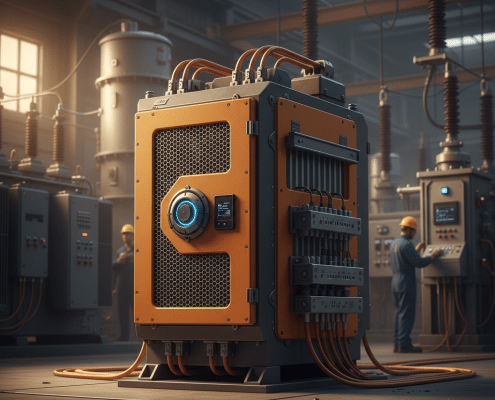
TCI PF Guard Harmonic Filters: The Ultimate Guide
Struggling with poor power quality in your industrial or commercial facility? Harmonics generated by Variable Frequency Drives (VFDs) can lead to equipment malfunctions and inflated energy bills. This guide details how TCI PF Guard harmonic filters offer a reliable solution. We dive deep into the technology behind these advanced passive harmonic filters, explaining how they work to ensure IEEE-519 compliance while protecting your assets. Learn the tangible benefits of superior power quality improvement, from extending equipment lifespan to boosting system efficiency. This article provides the essential insights needed for a more stable and cost-effective operation.
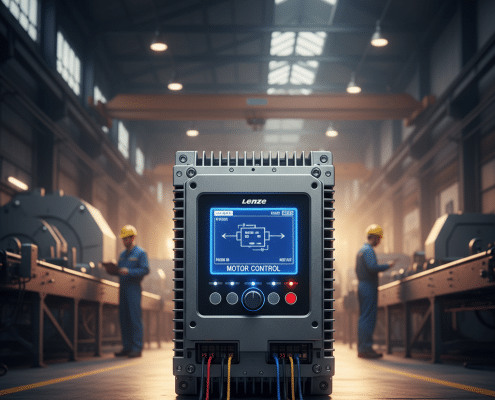
Lenze i510 Variable Frequency Drives VFDs Explained
Struggling with complex industrial motor control applications? The Lenze i510 series stands out as a top-tier solution, and our ultimate guide is here to show you why. This in-depth article explores everything you need to know about these powerful, compact, and efficient drives. We break down the technical specifications, walk you through common installation procedures, and simplify the programming parameters to help you optimize your machinery's performance from day one. Discover how the versatile i510 VFD controller can significantly improve energy efficiency, reduce mechanical stress on your valuable equipment, and provide the most precise speed control for any industrial application. Whether you're an OEM engineer designing a new system, a panel builder integrating components, or a maintenance technician troubleshooting on the factory floor, this article provides the practical insights and expert tips you need. Master the Lenze i510 and unlock the full potential of your motors to streamline your operations.
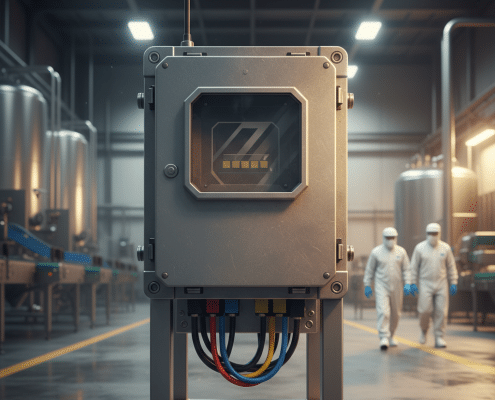
Yaskawa V1000-4X Variable Frequency Drives VFDs: Guide
Selecting the right motor control for harsh, wet, and sanitary environments is a critical decision for ensuring operational success and longevity. This comprehensive guide provides an in-depth look at the Yaskawa V1000-4X series, a leading NEMA 4X VFD drive designed specifically for these demanding challenges. We'll explore its key features, from its rugged, corrosion-resistant enclosure to its advanced programming capabilities that deliver precise and efficient AC motor control. Discover expert-backed best practices for installation, programming, and routine maintenance in washdown applications to maximize uptime and protect your investment. Whether you are an engineer specifying a new system or a maintenance technician troubleshooting in the field, this article offers the practical, actionable insights you need to confidently implement and manage the powerful Yaskawa washdown VFD for unparalleled performance and reliability.
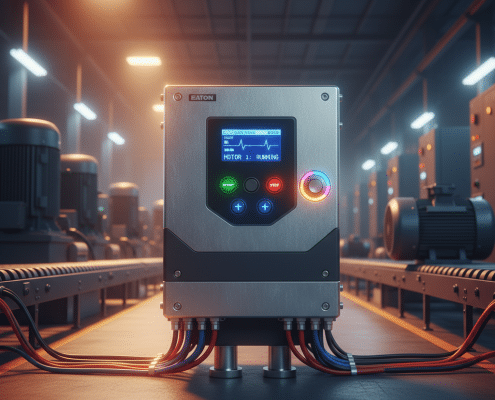
Eaton DS6 Softstarters: Setup & Troubleshooting Guide
Struggling with motor control? This guide dives deep into the Eaton DS6 series, a leading reduced voltage starter solution. We'll walk you through the essential features that set the DS6 apart, from its compact design to its advanced motor protection capabilities. Our step-by-step setup instructions will help you get your system running efficiently, minimizing downtime and maximizing performance. Plus, we'll cover common Eaton DS6 troubleshooting tips to help you diagnose and resolve issues quickly. Whether you're an engineer, technician, or project manager, this comprehensive overview will provide the practical knowledge you need to effectively implement and maintain these powerful soft starters for your critical applications.

ABB ACS355 Variable Frequency Drives VFDs: Overview
ABB's ACS355 is a top-of-the-line variable frequency drive that is perfect for a variety of applications. In this comprehensive technical guide, we will discuss the features and benefits of the ACS355, as well as provide a step-by-step guide to installation and programming. We will also cover some of the most common troubleshooting issues that you may encounter. By the end of this guide, you will have a complete understanding of ABB ACS355 variable frequency drives vfds and be able to confidently select the right drive for your application.
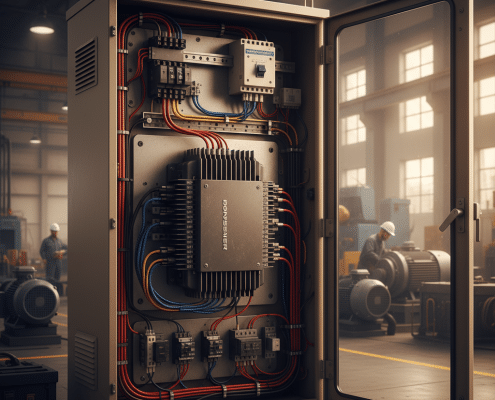
Benshaw RX4E Softstarters: The Ultimate User Guide
Mastering your industrial motor control systems is crucial for operational efficiency and equipment longevity. This guide provides a deep dive into Benshaw RX4E softstarters, a leading choice for reduced voltage starting applications. We break down everything from initial installation and wiring to advanced programming features found in the RX4E manual. Learn how this powerful industrial soft starter can protect your motors from mechanical shock and extend machinery life. Whether you're an engineer or technician, this article offers the practical insights you need to optimize your motor starting processes and troubleshoot with confidence. Get ready to unlock the full potential of your Benshaw equipment.

Allen Bradley Variable Frequency Drive: A Selection Guide
Choosing the correct Allen Bradley variable frequency drive is a critical decision for optimizing motor control, enhancing energy efficiency, and ensuring the reliability of your industrial applications. This comprehensive guide simplifies the selection process, breaking down complex technical specifications into actionable steps. We will explore the key differences between the popular PowerFlex drive series, comparing their features, benefits, and ideal use cases. You'll learn how to properly size a drive by understanding critical factors like voltage ratings, horsepower, and network communication options. Our practical insights will help you navigate the extensive Rockwell VFD portfolio with confidence. Whether you're an experienced engineer or a technician, this article provides the essential knowledge to select an AC motor controller that boosts performance and reduces operational costs. Stop the guesswork and make an informed decision for your automation projects today.
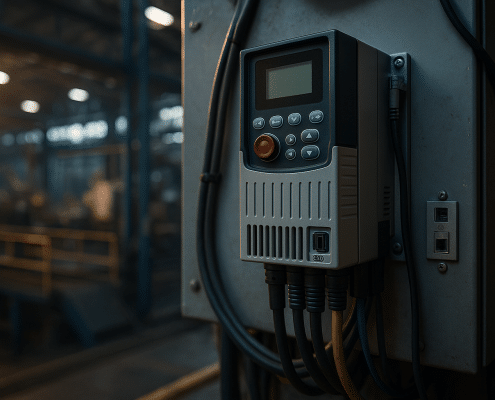
Allen Bradley PowerFlex 525: Setup, Specs & Alternatives
Unlock reliable motor control with the Allen Bradley PowerFlex 525. This compact VFD offers embedded EtherNet/IP, Safe Torque Off, and flexible control modes, making it ideal for conveyors, pumps, and fans. With energy-saving features, seamless PLC integration, and proven real-world efficiency gains, the PowerFlex 525 is a dependable choice for modern automation systems.

Danfoss Variable Frequency Drive: Selection & Setup
Precision control, lower energy bills, and longer motor life—all possible with a Danfoss variable frequency drive. By matching motor speed to real demand, Danfoss VFDs deliver up to 40–80% energy savings, improve power quality, and extend equipment reliability. Our latest article explores key features, standards compliance, and how Danfoss compares to other leading brands like ABB, Yaskawa, and Eaton.

Yaskawa VFD Drives: Ultimate Efficiency & Reliability Guide
Boost energy efficiency, slash downtime, and gain precision control with Yaskawa VFD drives. Our latest deep-dive explains exactly how GA-series inverters deliver 28-year MTBF reliability, real-world 30 %-plus power savings, and seamless PLC integration—plus side-by-side comparisons with ABB, Eaton, Hitachi, and Lenze. Get installation tips, sizing guidance, and links to top product options.
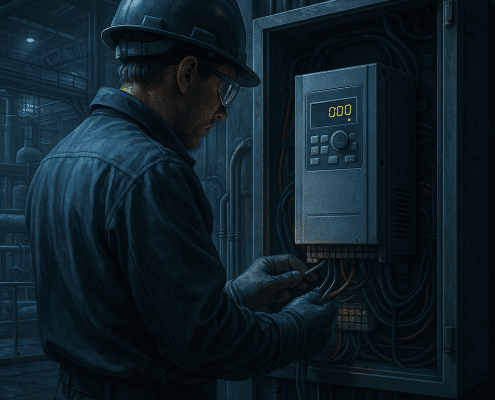
VFD Frequency Drive – Ultimate Industrial Guide & Best‑Practice Solutions
Electric motors consume nearly 40% of global industrial electricity. Yet most still run full speed even when only partial load is required. A properly specified VFD frequency drive transforms this waste into savings—cutting energy use by up to 50%, slashing peak demand, and extending motor life.

Yaskawa Variable Frequency Drive: Buy, Integrate, Save
Unlock lower energy bills and rock-solid uptime with the latest Yaskawa variable frequency drives. Our new guide explains how GA-series VFDs slash electricity use by up to 30 %, integrate seamlessly with today’s control networks, and out-perform rival brands on reliability. You’ll also learn when repair beats replace—and how Precision Electric’s 24/7 service keeps critical lines running. Ready to modernize your motor control?





